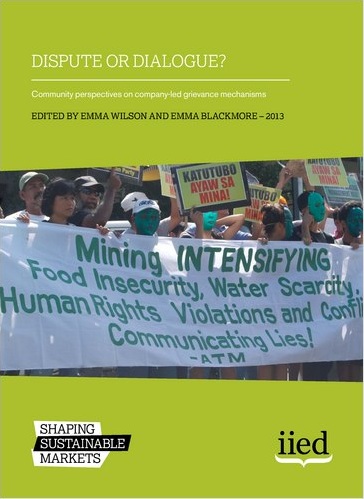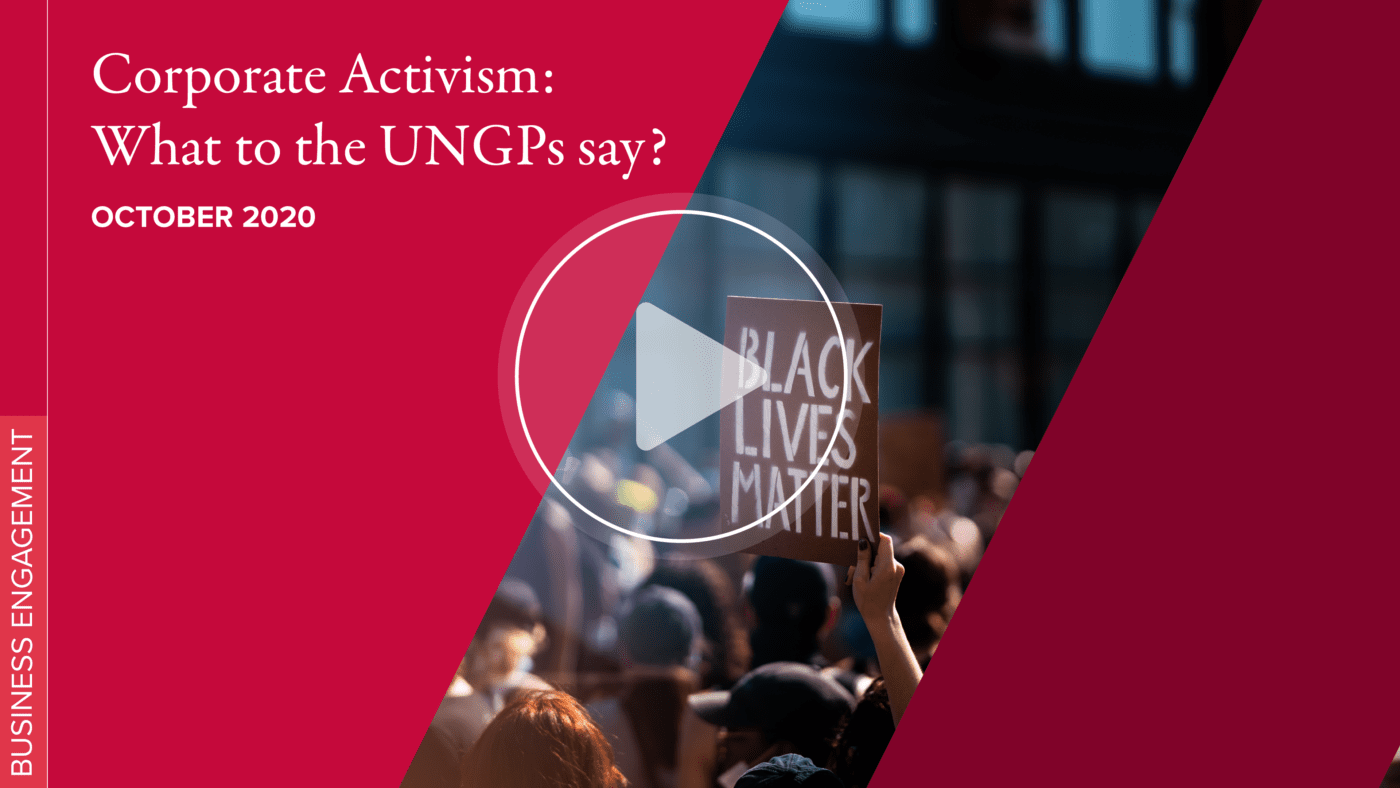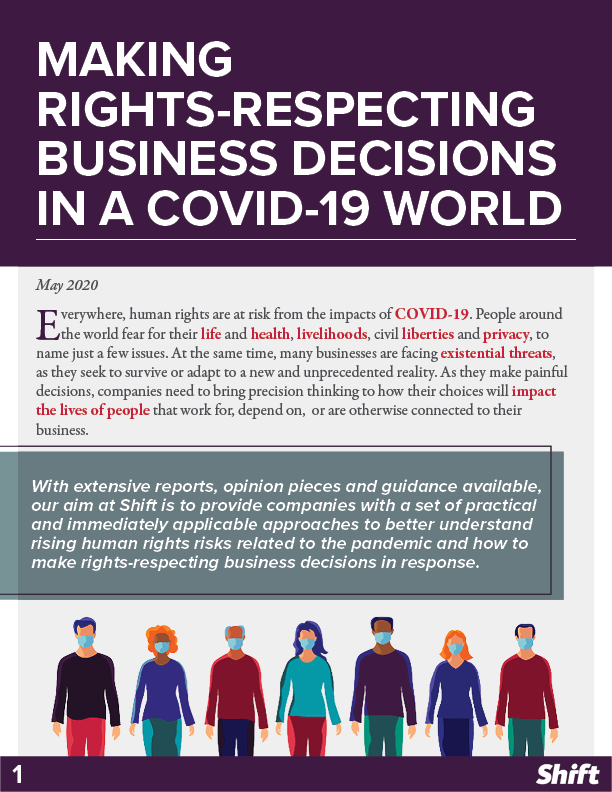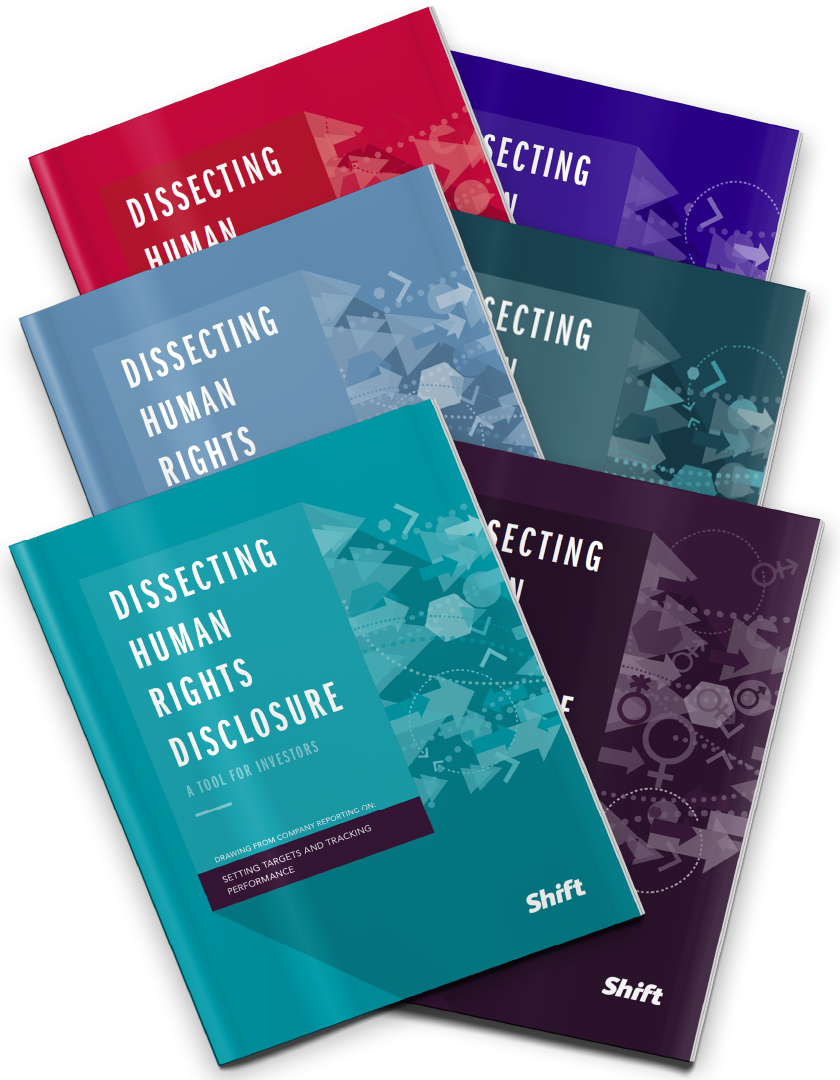This book includes a foreword and overview chapter authored by members of the Shift team. The summary below is excerpted from the resource.
Summary
What is a company– community grievance mechanism?
We define a company–community grievance mechanism as a process or set of processes for receiving, evaluating and addressing grievances from affected communities, in a timely and consistent manner at the site or operational level. The mechanism may be wholly or partially run by the company. Grievances might be real or perceived: the latter may be a source of acute anxiety for communities and can be addressed through dialogue and provision of timely and accurate information.
Extractive industry companies and their investors increasingly see a strong business case for building good relations with local communities, and addressing conflict and potential conflict in a timely and effective manner. This involves engaging meaningfully with communities affected by project operations, so as to build trust and to respond appropriately to any local concerns, major or minor. If left unaddressed even minor complaints may escalate into disputes or even violent conflict. This is potentially devastating for local communities. From the company perspective, it can also result in damage to its reputation, a loss of operational time and money, and it can put future investment opportunities at risk.
Effective channels by which local communities can voice their concerns about a project — and get these concerns addressed — are particularly important. In general the only formal mechanisms by which citizens can challenge the activities of extractive companies tend to be those available under host country legislation. However, courts and tribunals in host countries, particularly in developing countries and emerging economies, can be inefficient, corrupt or reluctant to interfere with extractive industry activities (Schwarte and Wilson, 2009). This can result in increased conflict and resentment among host communities, which may be a key legacy challenge when one company acquires a project from another.
Leading oil and gas, mining and forestry companies are starting to establish their own formal mechanisms to address and resolve local citizens’ grievances. Grievance mechanisms provide a channel for concerns to be identified and addressed before they escalate. As part of an effective overall community engagement strategy, they can help to build trust with stakeholders, reduce operational risks and enhance management of project impacts and community relations.
Frequently companies establish grievance mechanisms in order to comply with the formal requirements of project finance and international certification initiatives, which address conflict resolution and human rights protection. Since 2006, for example, the International Finance Corporation (IFC) requires its clients — companies that receive project finance — to set up and administer procedures to address project-related grievances from affected communities. Other international financial institutions have similar requirements. The environmental management systems standard ISO 14001 of the International Organization for Standardization (ISO), and the Forest Stewardship Council (FSC) certification standard both require certified companies to establish company–community grievance mechanisms.
More recently, a major influence on the adoption and development of grievance mechanisms, and on public awareness, has been the work of Professor John Ruggie in his role as UN Special Representative on Business and Human Rights, and the UN Human Rights Council’s endorsement of the UN Guiding Principles on Business and Human Rights (UN/OHCHR, 2011) (see Chapter 2).
There is a growing body of literature on company– community grievance mechanisms, supported by online resources such as BASESwiki (transferred to the ACCESS platform in 2013).
In general, there is a need for more long-term analysis of the implementation, impact and effectiveness of grievance mechanisms, including analysis of the broader societal impacts beyond day-to-day resolution of grievances. Having identified in particular a lack of material on the community perspectives on company-led grievance mechanisms — their effectiveness and impact on sustainable development and livelihoods locally — IIED sought to address this by undertaking and commissioning the research in this book, with case studies based on a mix of desk-research, interviews and fieldwork.
Chapter 2 is a review of the current literature and experience of grievance mechanisms. Based on desk-research and interviews with company and industry experts, it explores definitions of the term ‘grievance mechanism’; some history behind the evolution of grievance mechanisms including alternative dispute resolution; key drivers, standards and guidance for their design and use; and consideration of future trends in grievance mechanism development. This is followed by a series of four chapters focusing on case studies in the oil and gas, mining, and forestry sectors.
Chapter 3 covers the grievance mechanism run by BP in Azerbaijan for the 1,768km Baku–Tbilisi– Ceyhan (BTC) pipeline, which passes through Azerbaijan, Georgia and Turkey. The BTC pipeline project has been the focus of considerable international scrutiny by civil society organisations and project lenders, due to its size and impact and international profile. The project has benefited from investing in civil society capacity building during the construction phase, which has enabled informed dialogue between the company and civil society over the years. The case study highlights the need to balance government and company responsibilities in resolving grievances. It also demonstrates how a major international project such as this can positively influence government practice.
Chapter 4 is a case study of the company Congolaise Industrielle des Bois (CIB), which manages around 1.4 million hectares of tropical forest concessions in the northern Republic of Congo. The company achieved its first FSC certificate in 2006 and full certification in 2010. FSC has been a key driver for CIB to establish a grievance mechanism for resolving land-related disputes and for providing fair compensation for loss or damage to property, livelihoods and resources. This case study demonstrates how grievance mechanisms can be based on existing community structures and underscores the need to respect traditional conflict resolution approaches.
Chapter 5 relates to the Sakhalin-2 oil and gas project in the Russian Far East. Like the BTC project, Sakhalin-2 has used project finance, and has come under considerable international scrutiny and criticism, but is also seen as a pioneer of community engagement in Russia. This case study analyses the experience of the operating company, Sakhalin Energy, in addressing grievances and building a dialogue with the indigenous peoples in the north of the island. This is then compared to a conflict that has developed with a (non-indigenous) dacha community located close to a liquefied natural gas plant in the south of the island. The case study provides an example of a well-functioning grievance mechanism, but highlights the need to understand the full range of complexities associated with building dialogue with communities, including outside the grievance resolution process.
Chapter 6 considers the effectiveness of three different grievance mechanisms and stakeholder engagement processes implemented by mining companies. The first is Anglo American’s approach to stakeholder engagement, its grievance mechanism and the computerised system employed to manage grievances. The second is TVIRD in the Philippines, which demonstrates the value of building on local and traditional modes of communication and dispute management to create culturally appropriate grievance mechanisms. The third case, Kaltim Prima Coal in Indonesia, illustrates the ‘governance gaps’ that exist in a number of developing countries that a company–community grievance mechanism can help to fill.
The book’s findings demonstrate the importance of having an open and responsive overall approach to stakeholder engagement within which a grievance mechanism can be employed effectively. The book offers examples of successful approaches for enhancing dialogue — from civil society capacity building to designing engagement around traditional decision-making processes, as well as system innovations such as electronic logging, which facilitate the monitoring and management of grievance resolution within the company. The book considers community conflict with an eye to understanding the mechanics and the challenges of how company– community engagement takes place in practice. It also offers local perspectives on the implementation of standards and processes that are frequently analysed primarily at the level of system or process. As such the book offers a fresh take on a growing body of literature on company–community grievance mechanisms.




